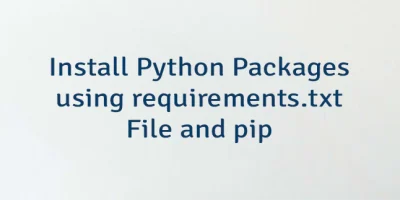Managing Python packages is an important part of maintaining a clean and efficient development environment. Over time, the environment can accumulate unused or outdated packages, which can lead to clutter and potential conflicts. This tutorial explains how to uninstall Python packages using pip.
Uninstall specific packages
If you need to remove specific packages, you can do so by directly specifying the package names in the pip uninstall command:
pip uninstall -y numpy urllib3The -y option confirms the uninstallation without prompting for each package.
Uninstall all packages
If you want to remove all installed Python packages, you can use a temporary requirements.txt file to track them and uninstall them in bulk. Use the pip freeze command to generate a list of installed packages and save it to a file:
pip freeze > requirements_delete.txtUse the generated file to uninstall all the listed packages:
pip uninstall -r requirements_delete.txt -yAfter the packages are uninstalled, you can delete the temporary file requirements_delete.txt.
For Linux users, there’s a more streamlined way to uninstall all Python packages without creating a temporary file. Use the following command to list all installed packages and uninstall them in one step:
pip freeze | xargs pip uninstall -yThe xargs command passes the package names as arguments to pip uninstall.




Leave a Comment
Cancel reply